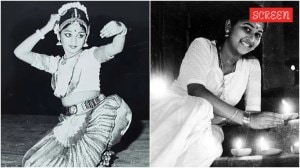No more Ayodhyas
The situation, reports from Madhya Pradesh tell us, is tense but under control. Why is it, then, that all those who’ve anxiously watche...

The situation, reports from Madhya Pradesh tell us, is tense but under control. Why is it, then, that all those who’ve anxiously watched the drama unfold in recent days in the sleepy town of Dhar near Indore, are still holding their breath? Why does the failure of assorted self-styled dharam rakshaks (protectors of the faith) to storm the ‘disputed site’ — the 11th century bhojshala that both Hindu and Muslim ‘leaders’ have claimed as their own — not reassure? That failed bid in MP on Tuesday morning, even as the ‘Ayodhya issue’ raised its head on the floor of the House and threatened to overtake yet another session in Parliament, echoes ominously like a memory and a portent.
Far from the national capital, at the margins of the media’s frame, the tensions have been inexorably building up at Dhar. There was communal rioting in 1944 and then again in 1984. In 1952, the monument was taken over by the Archaeological Survey of India, and after years of negotiating increasingly fraught claims by both communities, it declared the monument a restricted area in 1998, open to the public on Fridays for namaz and once a year for Basant Panchami. But this year on Basant Panchami, the Hindu Jagran Manch made a bid for the Page One headline. At the end of a year-long ‘satyagraha’, it announced its readiness for ‘andolan’. To ‘liberate’ the site, to presumably wreak at Dhar the destruction the rampaging kar sevaks brought at the site of another ‘disputed structure’ more than a decade ago in Uttar Pradesh. This year, with assembly elections around the corner, VHP’s Praveen Togadia, still fevered by the electoral success he famously helped fashion in Gujarat, has threatened an Ayodhya in Madhya Pradesh. Digvijay Singh’s government must pick up the gauntlet.
The nation will be watching how the much-promoted Congress chief minister fights this one. Much has been said and heard about Singh’s strategy of ‘soft Hindutva’, his attempts to subtly steal Hindutva issues from the BJP, all the better for his own party to play them for electoral gain. So will Diggy Raja prove equal to this unsubtle challenge? Can he summon the unambiguous commitment to peace required to fend off the hate brigade? There is no room for ambiguity in this battle, no call for the fine political manoeuvre. All those who threaten the peace between communities in Madhya Pradesh must be clearly told they will not be granted a free run. Because India cannot afford another lingering, festering communal sore. Because in a nation still searching for the leadership and vision to confront and solve old problems, new ones cannot be allowed to build up. They must be urgently nipped in the bud.



- 01
- 02
- 03
- 04
- 05



























